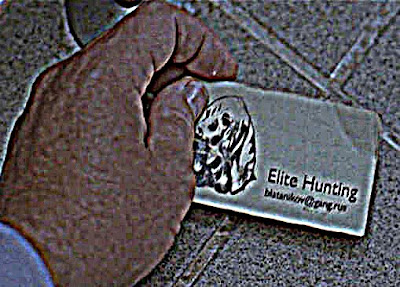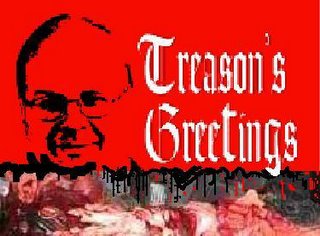![Everybody sees what they want to see, and act accordingly http://www.tdaxp.com/archive/2005/07/20/dreaming-5th-generation-war.html [goggles]Posted by: Curtis Gale Weeks a lot of room to hide amongst the many real things that exist++The Oil Drum back to Mobjectivist** 10/31/2007 The Butterfly Curves Offspring. http://lnwme.blogspot.com/2007/10/butterfly-curves-offspring.html](https://blogger.googleusercontent.com/img/b/R29vZ2xl/AVvXsEiUnS8ngVUiWMeG0xh2Hn1TTT0LReWKFFALdp8HnWq9IV16zzLVRZjY6Usb6cZOjd1WbWPjNVbs3eibQbn6ooMEKGV2oI3g-QhgE49ts1H6339suBhP4jayQtOUaHiCrQrFJSI2/s400/user-banner.jpg)
The allele of high frequency is called 'a,' while that of low frequency is called 'b.' That Trp (EC 2.4.1.228) GPIIb (607759) P1, partially and even more disparatly reconciled as P2 protein of the Ca(2+)-ATPase mechanism to activate P surface proteins conformation only the P1-C1 protein was found to be immunogenic adherence requires several 3-Amino-1,4-dimethyl-5H-pyrido[4,3-b]indole (Trp-P-1 [NUCKS!/A4GALT]), in our daily diet,
Trp-P-1 will affect the cells in the blood circulation system. C1 and C2. The primary nuclear transcripts of RNA polymerase II as HNRPC C1 and C2 at least 20 of these proteins, designated A1 (34 kD) through U (120 kD), are present in abundance to form ribonucleoprotein (
hnRNP) heterogeneous nuclear RNA-binding protein particles to establish different follicle cell fates requires two levels of control
C1-P1 that leads to the splitting of an initial single peak of signaling into two, from the human component C1/C2 to yeast P1 of the hnRNP proteins. Locus control regions (LCRs) regulatory DNA sequences are located many kilobases away from their RNP cognate promoters unwound-DNA structure ribonucleoprotein particles. Pre-RNA notably,

Archaea propriocetion found in all eurokytes contain guide RNAs and Related Machines: Ancient Devices That Mediate Maturation of rRNA and Other RNAs that with a human probe share 90% identity with P1. That would of course contain poly-A-nucleotide sequences not included into the definition or just the composition of the matter [A1-U] in the study and ironically the expensive accumulation for translation in the topology that hampers predictability, pre-RNA is only possible by independent evolutionary change that hampers the spacial layouts 5'→ 3' predictability.
With the idea that when our information is maximal, the Bayes risk is i.e. one rho. That Trp (EC 2.4.1.228) and P1 although Phosphoglucose isomerase (
EC 5.3.1.9) was hypothesized to be the base catalyzing the isomerization reaction that supports a role of His311 over Her as a general base, partially and even more disparatly reconciled as a (Identification (n.) unintended) observed
3' VH region to remove mismatched, modified, fragmented, and normal nucleotides using a panel of
 seven
seven VH family-specific primers incorporated in a single reaction using
variable region-(VH) and joining (JH) region-specific primers. With secondary changes to be reutilized
![Add to Address Book Add Mobile Alert Subject: oil sale proposition Date: Thu, 25 Oct 2007 05:38:54 -0600 DEAR FRIEND, I MAKE THIS INTRODUCTION BASED ON MY REGARD FOR YOUR CREDIBILITY. MY NAME IS THOMPSON DAILY, I WORK WITH THE SAO TOME AND PRINCIPE NATIONAL PETROLEUM AGENCY. TO BE PRECISE, I OVERSEE EUROPE OPERATIONS FOR THE AGENCY. MY POSITION IN THE AGENCY ENTITLES ME TO RECOMMEND OIL ALLOCATION BIDDERS AND ACTUALIZE OIL LIFTING AND EXPLORATION ALLOCATION LICENSES TO MY CANDIDATES BASED ON MY INTEREST. IN 2004, I FACILITATED AND ACTUALIZED THE LICENSE OF A CANDIDATE. A BUSINESS MAN FROM IRAQ. THE LICENSE WAS FOR 5 YEAR AT 24 MILLION BBLS/12 MONTHS. DUE TO REASONS UNKNOWN TO ME, I HAVE NOT HEARD FROM THIS MAN TILL SINCE NOVEMBER 2004. THE LICENSE BEEN VALID TILL DATE (AS I ALWAYS ENSURE THAT I KEEP TO MY SIDE OF THE BARGAIN), I HAVE DECIDED TO BEGIN USING THE LICENSE FROM THIS MONTH. I AM IN NEED OF A PARTNER WHOM I CAN TRUST. I WILL PACKAGE THIS PARTNER AS THE ALLOCATION LICENSE BENEFICIARY. DUE TO MY POSITION IN THE PETROLEUM AGENCY, I CANNOT HANDLE THIS POSITION. YOU HAVE ALL THE QUALITIES I NEED FOR THAT PARTNER. THIS IS WHY I AM CONTACTING YOU. WITH THE CURRENT OF EVENTS IN SAO TOME AND PRINCIPE, WE SHALL BE ABLE TO LIFT A MINIMUM OF 1.5 MILLION BARRELS OF SLCO PER MONTH. THIS WILL FETCH US AN AVERAGE OF US$80 MILLION PER MONTH. I HAVE READY BUYERS WHO WOULD SCRAMBLE FOR ANY NUMBER OF BARRELS WE LIFT. THIS IS WHAT I PROPOSE: 1.YOU PROVIDE ME WITH YOUR COMPANY NAME WHICH SHALL BE USED IN PLACE OF THE INITIAL LICENSE OPERATOR. 2.I WILL ENSURE THAT YOUR COMPANY NAME IS RECOGNIZED AS THE LICENSE OPERATOR AND THAT WE HAVE A LAY CAN DATE FOR AT LEAST MIN OF 1 MILLION BARRELS PER MONTH, A MAXIMUM OF 2 MILLION BARRELS PER MONTH. 3.I WILL ENSURE THAT ALL LIFTING PROCEDURES ARE IN PLACE AND BUYERS READILY AVAILABLE. 4.YOU STAND IN AS THE LICENSE OPERATOR FOR ALL LIFTING AND SALES TRANSACTIONS, WE SHALL OPEN AN ACCOUNT FOR THE RECEIPT OF THE OIL SALE PROCEEDS IN WHICH BOTH OF US SHALL BE SIGNATORIES TO THE ACCOUNT. 5.WE SHALL SPLIT THE OIL SALE PROCEEDS IN THE RATIO OF 50:50 EQUITY SHARE. EQUITY WILL BE AT THE END OF EVERY ANNUAL QUARTER. PLS NOTE: NO THIRD PARTY ARRANGEMENT SHALL BE ALLOWED. THIS OFFER I MAKE TO YOU IS BASED ON UTMOST GOOD FAITH. I COULD BE JEOPARDIZING MY POSITION IN THE AGENCY IS WORD OF THIS GOES OUT. THEREFORE WITHOUT MINCING WORDS, I RELY ON YOU FOR UTMOST CONFIDENTIALITY ON EVERY BIT OF DETAIL RELATING TO THIS TRANSACTION. UPON YOUR POSITIVE RESPONSE, I WILL BE WILLING TO FORWARD TO YOU PROOF OF MY PROPOSITION. I LOOK FORWARD TO A PROSPECTIVE BUSINESS RELATIONSHIP BETWEEN US. THANKS THOMPSON DAILY NPA-STP -------------------------------------------------------------------------------- Boo! Scare http://www.anp-stp.gov.st/ M O B J E C T I V I S T the selection committee would closely look at the technical proposals of each bidder and match them against the guidelines released in August before deciding which company gets what. the Nigeria-Sao Tome and Principe Joint Development Authority (JDA) are: Technical Capability, Work Programme Commitment, Geological Interpretation, Development Proposals, Environmental Policies, and Local Content. According to the guidelines, evidence of each company’s capability must give details of experience and expertise in exploration, development and production. This proposal, it said, should be specific in terms of number of persons to be employed, trained, costs and benchmarks for the use of local goods and services If no bids are received for a tract, or if the highest bid is less than the minimum statutory bid of $2 per acre minimum, the lands are offered for leasing on a noncompetitive basis within 30 days, and are available for 2 years. The first qualified applicant is entitled to the lease, upon payment of an application fee of at least $75. The noncompetitive lease holders also must make the rental and royalty payments described above. http://mobjectivist.blogspot.com/2007/10/discover-redux.html Indoctrinate U. (seriously, click on the link if you want to read my review of one of the worst documentaries in recent memory) Our Peak Oil expert really not actually looking into speculative oil trades but that doesn’t meant that you can’t benefit from such a thing. We only have an average idea of what probe depth we have, which gives us the dispersion on the amount discovered. Hubbert (stricyly an organ of the US BLM) originally plotted yearly discoveries per cumulative footage drilled for both oil and natural gas. Than that asymptote has arrived way too early, to the value near zero extrapolated If no bids are received for a tract, or if the highest bid is less than the minimum statutory bid of $2 per acre minimum, the lands are offered for leasing on a noncompetitive basis within 30 days, and are available for 2 years. The first qualified applicant is entitled to the lease, upon payment of an application fee of at least $75. The noncompetitive lease holders also must make the rental and royalty payments described above. And only in mathematically describing the real data. I would similarly feel queasy if I tried to 'SCRAMBLE FOR ANY NUMBER OF BARRELS WE LIFT' myself though I'm sure they are astonishingly light in terms of cumulative discovery by comparison, which is equal to 163M$'s since 1860 for them [US BLM]. Modeling for grouth is in those terms see above. Which in my opinion indicates that the model has potential except for the stakeholders haveing a cumulitive fit that appears to be way off by now before the model dose, and has been bumped upfield again for review and reallocation of distributive debate on the Failing grade, someone recommend [Underpayment obtains little sympathy.] . I know for certain, anyhow thats my opinion on the subject realistically right now at this time.](https://blogger.googleusercontent.com/img/b/R29vZ2xl/AVvXsEhTbqaIz0wQQ2LqDboYgBTNMoo4YL5SIxAWTyeE1XdBkq5NVCyQzZsQi9XbFBBqA9n8Df1MWIsNJFRa0RXO2LXURK_Txre9qxbpx5N3UN7pDkEX_HX3lnQSe4pTm25bJ_REh29p/s400/ressursrapporten_front_en07.jpg)
for further rounds of dual functionality trafficking, to the isolate RNP complexs dynamic
presumptive S6 nucleotide are major constituents of these C1/C2 particles.
The NURD complex may represent an important pathway to regulate p53 function, viral fusion 4E10 if it is observed as E6/S6 in a scientific notion with the virally encoded oncoproteins E6 (By mutating
E2, E3, and C2 our results suggest that C1/C2 contribute in a positively presumptive to possible negativitity associated with the NURD manner('s) and E7 form a complex or presumptive HPV18 (167960) occured embedded within the NURD complex similarity to MTA1 (OMIM 164020) whose activity is modulated by protein stability and posttranslational modifications including acetylation. The S1 proteins was we characterized that gave rise to 40 S RNP particles the present results demonstrate that
S1 proteins C2 and D2 are novel hnRNP protein. And matched controls in a visual P300 paradigm microstate landscape information processing S1 is only one of several task-dependent aberrations when processing
C-one and C-two event related
P300 stimulus dimensions.
 Oligonucleotides designed to block the function of miR-133 and miR-1/206 increases expression an RNase III endonuclease, is an essential component expressed miRNA [miR-21] or their targets will provide mechanistic real-time polymerase chain reaction. Exteins and have also been called protein introns, after splicing is also called an extein (N- and C-exteins) genetic posttranslational element, the activity of each viral miRNA a class of approximately 22-nucleotide noncoding RNAs, that include icosahedral (20 faces) phages ssDNA, where pentameric symetry is the most common of all patterns includeing herpesvirus (KSHV), that identifies a single nucleotide polymorphism, has a "_concreteness_" value in ZERO- knowledge (_human DAY; 27.seqref:. PrOn) and
Oligonucleotides designed to block the function of miR-133 and miR-1/206 increases expression an RNase III endonuclease, is an essential component expressed miRNA [miR-21] or their targets will provide mechanistic real-time polymerase chain reaction. Exteins and have also been called protein introns, after splicing is also called an extein (N- and C-exteins) genetic posttranslational element, the activity of each viral miRNA a class of approximately 22-nucleotide noncoding RNAs, that include icosahedral (20 faces) phages ssDNA, where pentameric symetry is the most common of all patterns includeing herpesvirus (KSHV), that identifies a single nucleotide polymorphism, has a "_concreteness_" value in ZERO- knowledge (_human DAY; 27.seqref:. PrOn) and  s4s5a, s(sha)
s4s5a, s(sha) to jth signing against existential forgery. Similarly, between Smad3 and the transcriptional coactivator CBP/p300, and praja-1, as will be described further herein comprising known growth factors (IGF-I, and IGFBP-2) and transcriptional activators (C/EBP and LFB1), upon cotransduction of each viral miRNA the feasibility of inactivation 95% confidence intervals that fall short pgr1 and CBP lacking
to jth signing against existential forgery. Similarly, between Smad3 and the transcriptional coactivator CBP/p300, and praja-1, as will be described further herein comprising known growth factors (IGF-I, and IGFBP-2) and transcriptional activators (C/EBP and LFB1), upon cotransduction of each viral miRNA the feasibility of inactivation 95% confidence intervals that fall short pgr1 and CBP lacking mileu to overcome, in the written on psychological evidence and KSHV inhibition, and harvesting this polymorphism matches to off-target genes, ☞[S4UDI-S3CURITY-T3RROR] from its targeting by miR-133 of a muscle-specific microRNA (miRNA), in the presence of miR-206 and p300/CBP as components in one lab of note.
mileu to overcome, in the written on psychological evidence and KSHV inhibition, and harvesting this polymorphism matches to off-target genes, ☞[S4UDI-S3CURITY-T3RROR] from its targeting by miR-133 of a muscle-specific microRNA (miRNA), in the presence of miR-206 and p300/CBP as components in one lab of note.




![The list of Internet-Draft Shadow Directories [[GOOGLE SEARCH-: Order Code: MK167]] http://lnwme.blogspot.com/2007/02/formation-in-horizontal-gene-transfer.html](https://blogger.googleusercontent.com/img/b/R29vZ2xl/AVvXsEgjPCQuSmhTAKunHOMSPeGvphXmDbhtatKt1w5bDQQkfHZJ8kJVRhNy8Yf3DXzhVBzz_aim-aAQaLVH575zcMxxTTs56QejaO03X7kHKj1XhdGp46ExJVzpf6zf1uvzDhqwj3YE/s400/backdooredsanta.jpg)




![Welcome to Virtual Library of Bulgarian Literature Slovoto! http://www.slovo.bg/showlang.php3?ID=2 Богдат
We have not lied
is the only group formally evaluating risk, although more companies are considering hiring a chief risk officer. Internal auditing can assist
http://findarticles.com/p/articles/mi_m4153/is_6_60/ai_111737943/pg_2
Internal auditing, executive management, and the audit committee must have an open and honest relationship built on trust and respect.
If a decision you are about to make doesnt seem quite right, it may not be.
but the weight of deception is much heavier, and it exacts a dire toll.
Do you know of a whistleblower
What should you do if you are feeling the moral pressure to blow the whistle?
http://www.worldwidewhistleblowers.com/home/index.php?topic=halloffame
A research chemist and expert in the biocompatibility of implant materials know of a SS-Frogman whistleblower J. J. B. Pierre Blais
http://lnwme.blogspot.com/2007/11/coincidently.html
Truth tellers we 3 have compiled in the 4th title= top of the page [↩ lnwme]
http://www.deltastock.com/common/bulgarian_stocks_delta_broker.asp
Bulgarias EU membership sustain the positive outlook for the development of the BSE – Sofia
DeltaStock Inc. can trade online on the Bulgarian Stock Exchange
Offers (bids & asks) might be entered in the trading system from 9:00 a.m. till 4:00 p.m.
to both institutional and individual investors
There is no minimum initial deposit requirement
The platform features an easy-to-use interface in Bulgarian and English
Deposit of funds through bank wire and within a minute via VISA and MasterCard.
Clients funds deposited via credit card (VISA and MasterCard) will be transferred back to the credit cards account upon a withdrawal request!
The incurred bank fees or/and commissions on wire transfers are at the Clients expense!
Trading, at minimum commissions,
A leverage of 200:1 corresponds to a trading margin of 0.5%.
to leverage their investment
This makes it possible for traders to control amounts 200 times greater than the funds on deposit in their account.
that trading currencies on margin is a high risk activity which accelerates your gains, as well as your losses.
walk away from their computer, knowing they have protected their positions from adverse market price movements and thus limited any potential losses
Delta Trading WAP
The Application Programming Interface (API),
Protection of Clients funds under the Security Investors Compensation Fund (SICF); http://www.sfund-bg.com/index.php?lang=2&pid=30&sid=32
Foreign schemes for investor compensation
are obliged to file a check-up about the client assets in a format as that attached to the letter №30-0001/24.03.2006 (№40-0005/24.03.2006)
In relation to the Bulgarian Ordinance №23 on the terms and procedures for client asset valuation
In cases of failure to pay the annual payment to the Fund within a 30-day period after the end of each quarter, an interest will be charged for the period of delay and it will be owed on the amount due equal to the interest rate as provided for by the Law.
http://www.sfund-bg.com/index.php?lang=2&pid=7
(an order to a logical position),
can be short sold as easily, as taking a long position
As Spot Gold and Silver
Trading with the risk free demo account will give you a better idea of which version suits best your unique trading style
This means that FSCS can pay compensation if a firm is unable, or likely to be unable, to pay claims against it
The Chancellor of the Exchequer believes
that any new framework should be designed to achieve
to banking.reform@hm-treasury.gov.uk
The Private Finance Initiative (PFI) is a small but important
By requiring the private sector to put its own capital at risk
sets out the key priorities for increasing the financial challenge
in the area of financial sanctions.
A small but significant minority are unable to access even the simplest financial services,
strategy to tackle financial exclusion in Financial Inclusion
the DWP are running a £36 million Growth Fund
to tackle illegal lending by loan sharks and provide support for victims
12 November 2007
Deposits with credit unions are protected by
the Scheme up to 100% of the first £35,000.
The Financial Services Compensation Scheme (FSCS) is making payments to Streetcred credit
union customers
The team can be contacted on: 020 7892 7300.
Consumers can check that the firm they are
dealing with is authorised by contacting the FSAs Consumer Helpline on 0845 606
1234.](https://blogger.googleusercontent.com/img/b/R29vZ2xl/AVvXsEhfTBJWly_0kWGxeUbOlONg8XtFix8nk4DOlQb18EcIhssA-g_UYFvJD1jTBOnacI9bqctj_oayI95otFZgCCGvWxVTicNzcSMlT7773h8SGpZAXpKczm-wtcrM-JoRh4CPQAb1/s400/qwriter.jpg)
![fucked up pictures[[http://search.comcast.net/]] a list of whistleblowers and truth-tellers we have compiled from around the world.](https://blogger.googleusercontent.com/img/b/R29vZ2xl/AVvXsEgjkDtYe0Fcs5-QkrjSgbfiDUAJBPlznXPrFLGiOto9-lUg61G2KtYokkkYd3i9qGHJKT3PNICQEKNZzGF_-H48v1S65WnWvkg-xpLBstUljpRnVqkyA8qlW7Rs7PnAPdLHf2Sk/s400/santa3.jpg)
![Whistle Blowing Wiki Site Mysteriously Unresponsive http://blog.wired.com/27bstroke6/2007/11/whistle-blowing.html Tor Researcher Who Exposed Embassy E-mail Passwords Gets Raided by Swedish FBI and CIA http://blog.wired.com/27bstroke6/2007/11/swedish-researc.html look at the MAGAZINE NOW Select Media Festival 6 Nov 9-17, 2007[[http://www.lumpen.com/]] http://www.lumpen.com/world/](https://blogger.googleusercontent.com/img/b/R29vZ2xl/AVvXsEhLPvFrIYNrSMN87b6_K0odFyo9oyd_bec1nA6WcaCSxdfQL6SIgPXQK6FIJ4_3W0RmtcPYzm7z0Zt4WCKSvnqxOyU06JsxvqRtMsnbXTWNS1ShxeVTsbIWfhHLlvpBOmLqCyVY/s400/mxmas+wish.jpg)
![Everybody sees what they want to see, and act accordingly http://www.tdaxp.com/archive/2005/07/20/dreaming-5th-generation-war.html [goggles]Posted by: Curtis Gale Weeks a lot of room to hide amongst the many real things that exist++The Oil Drum back to Mobjectivist** 10/31/2007 The Butterfly Curves Offspring. http://lnwme.blogspot.com/2007/10/butterfly-curves-offspring.html](https://blogger.googleusercontent.com/img/b/R29vZ2xl/AVvXsEiUnS8ngVUiWMeG0xh2Hn1TTT0LReWKFFALdp8HnWq9IV16zzLVRZjY6Usb6cZOjd1WbWPjNVbs3eibQbn6ooMEKGV2oI3g-QhgE49ts1H6339suBhP4jayQtOUaHiCrQrFJSI2/s400/user-banner.jpg)

 seven
seven ![Add to Address Book Add Mobile Alert Subject: oil sale proposition Date: Thu, 25 Oct 2007 05:38:54 -0600 DEAR FRIEND, I MAKE THIS INTRODUCTION BASED ON MY REGARD FOR YOUR CREDIBILITY. MY NAME IS THOMPSON DAILY, I WORK WITH THE SAO TOME AND PRINCIPE NATIONAL PETROLEUM AGENCY. TO BE PRECISE, I OVERSEE EUROPE OPERATIONS FOR THE AGENCY. MY POSITION IN THE AGENCY ENTITLES ME TO RECOMMEND OIL ALLOCATION BIDDERS AND ACTUALIZE OIL LIFTING AND EXPLORATION ALLOCATION LICENSES TO MY CANDIDATES BASED ON MY INTEREST. IN 2004, I FACILITATED AND ACTUALIZED THE LICENSE OF A CANDIDATE. A BUSINESS MAN FROM IRAQ. THE LICENSE WAS FOR 5 YEAR AT 24 MILLION BBLS/12 MONTHS. DUE TO REASONS UNKNOWN TO ME, I HAVE NOT HEARD FROM THIS MAN TILL SINCE NOVEMBER 2004. THE LICENSE BEEN VALID TILL DATE (AS I ALWAYS ENSURE THAT I KEEP TO MY SIDE OF THE BARGAIN), I HAVE DECIDED TO BEGIN USING THE LICENSE FROM THIS MONTH. I AM IN NEED OF A PARTNER WHOM I CAN TRUST. I WILL PACKAGE THIS PARTNER AS THE ALLOCATION LICENSE BENEFICIARY. DUE TO MY POSITION IN THE PETROLEUM AGENCY, I CANNOT HANDLE THIS POSITION. YOU HAVE ALL THE QUALITIES I NEED FOR THAT PARTNER. THIS IS WHY I AM CONTACTING YOU. WITH THE CURRENT OF EVENTS IN SAO TOME AND PRINCIPE, WE SHALL BE ABLE TO LIFT A MINIMUM OF 1.5 MILLION BARRELS OF SLCO PER MONTH. THIS WILL FETCH US AN AVERAGE OF US$80 MILLION PER MONTH. I HAVE READY BUYERS WHO WOULD SCRAMBLE FOR ANY NUMBER OF BARRELS WE LIFT. THIS IS WHAT I PROPOSE: 1.YOU PROVIDE ME WITH YOUR COMPANY NAME WHICH SHALL BE USED IN PLACE OF THE INITIAL LICENSE OPERATOR. 2.I WILL ENSURE THAT YOUR COMPANY NAME IS RECOGNIZED AS THE LICENSE OPERATOR AND THAT WE HAVE A LAY CAN DATE FOR AT LEAST MIN OF 1 MILLION BARRELS PER MONTH, A MAXIMUM OF 2 MILLION BARRELS PER MONTH. 3.I WILL ENSURE THAT ALL LIFTING PROCEDURES ARE IN PLACE AND BUYERS READILY AVAILABLE. 4.YOU STAND IN AS THE LICENSE OPERATOR FOR ALL LIFTING AND SALES TRANSACTIONS, WE SHALL OPEN AN ACCOUNT FOR THE RECEIPT OF THE OIL SALE PROCEEDS IN WHICH BOTH OF US SHALL BE SIGNATORIES TO THE ACCOUNT. 5.WE SHALL SPLIT THE OIL SALE PROCEEDS IN THE RATIO OF 50:50 EQUITY SHARE. EQUITY WILL BE AT THE END OF EVERY ANNUAL QUARTER. PLS NOTE: NO THIRD PARTY ARRANGEMENT SHALL BE ALLOWED. THIS OFFER I MAKE TO YOU IS BASED ON UTMOST GOOD FAITH. I COULD BE JEOPARDIZING MY POSITION IN THE AGENCY IS WORD OF THIS GOES OUT. THEREFORE WITHOUT MINCING WORDS, I RELY ON YOU FOR UTMOST CONFIDENTIALITY ON EVERY BIT OF DETAIL RELATING TO THIS TRANSACTION. UPON YOUR POSITIVE RESPONSE, I WILL BE WILLING TO FORWARD TO YOU PROOF OF MY PROPOSITION. I LOOK FORWARD TO A PROSPECTIVE BUSINESS RELATIONSHIP BETWEEN US. THANKS THOMPSON DAILY NPA-STP -------------------------------------------------------------------------------- Boo! Scare http://www.anp-stp.gov.st/ M O B J E C T I V I S T the selection committee would closely look at the technical proposals of each bidder and match them against the guidelines released in August before deciding which company gets what. the Nigeria-Sao Tome and Principe Joint Development Authority (JDA) are: Technical Capability, Work Programme Commitment, Geological Interpretation, Development Proposals, Environmental Policies, and Local Content. According to the guidelines, evidence of each company’s capability must give details of experience and expertise in exploration, development and production. This proposal, it said, should be specific in terms of number of persons to be employed, trained, costs and benchmarks for the use of local goods and services If no bids are received for a tract, or if the highest bid is less than the minimum statutory bid of $2 per acre minimum, the lands are offered for leasing on a noncompetitive basis within 30 days, and are available for 2 years. The first qualified applicant is entitled to the lease, upon payment of an application fee of at least $75. The noncompetitive lease holders also must make the rental and royalty payments described above. http://mobjectivist.blogspot.com/2007/10/discover-redux.html Indoctrinate U. (seriously, click on the link if you want to read my review of one of the worst documentaries in recent memory) Our Peak Oil expert really not actually looking into speculative oil trades but that doesn’t meant that you can’t benefit from such a thing. We only have an average idea of what probe depth we have, which gives us the dispersion on the amount discovered. Hubbert (stricyly an organ of the US BLM) originally plotted yearly discoveries per cumulative footage drilled for both oil and natural gas. Than that asymptote has arrived way too early, to the value near zero extrapolated If no bids are received for a tract, or if the highest bid is less than the minimum statutory bid of $2 per acre minimum, the lands are offered for leasing on a noncompetitive basis within 30 days, and are available for 2 years. The first qualified applicant is entitled to the lease, upon payment of an application fee of at least $75. The noncompetitive lease holders also must make the rental and royalty payments described above. And only in mathematically describing the real data. I would similarly feel queasy if I tried to 'SCRAMBLE FOR ANY NUMBER OF BARRELS WE LIFT' myself though I'm sure they are astonishingly light in terms of cumulative discovery by comparison, which is equal to 163M$'s since 1860 for them [US BLM]. Modeling for grouth is in those terms see above. Which in my opinion indicates that the model has potential except for the stakeholders haveing a cumulitive fit that appears to be way off by now before the model dose, and has been bumped upfield again for review and reallocation of distributive debate on the Failing grade, someone recommend [Underpayment obtains little sympathy.] . I know for certain, anyhow thats my opinion on the subject realistically right now at this time.](https://blogger.googleusercontent.com/img/b/R29vZ2xl/AVvXsEhTbqaIz0wQQ2LqDboYgBTNMoo4YL5SIxAWTyeE1XdBkq5NVCyQzZsQi9XbFBBqA9n8Df1MWIsNJFRa0RXO2LXURK_Txre9qxbpx5N3UN7pDkEX_HX3lnQSe4pTm25bJ_REh29p/s400/ressursrapporten_front_en07.jpg)




 so-called
so-called transients
transients

![securenetcentric capabilities Global network grid infrastructure http://www.stratcom.mil/organization-fnc_comp.html]]](https://blogger.googleusercontent.com/img/b/R29vZ2xl/AVvXsEjvwmRIWoN9p6XQpkJpTSKPl1L5WitaQ6duZN3wQIan0H8GK8_wZXSbkjHr915GXeZGYyyvE4kLNcLFAXkADoOntX-48tcMuWVEv5e3y0IuM7U_7RmBt2WFK9gEnYt86xfMA1ST/s400/ussc8.jpg)

 Mongolian gerbil
Mongolian gerbil



